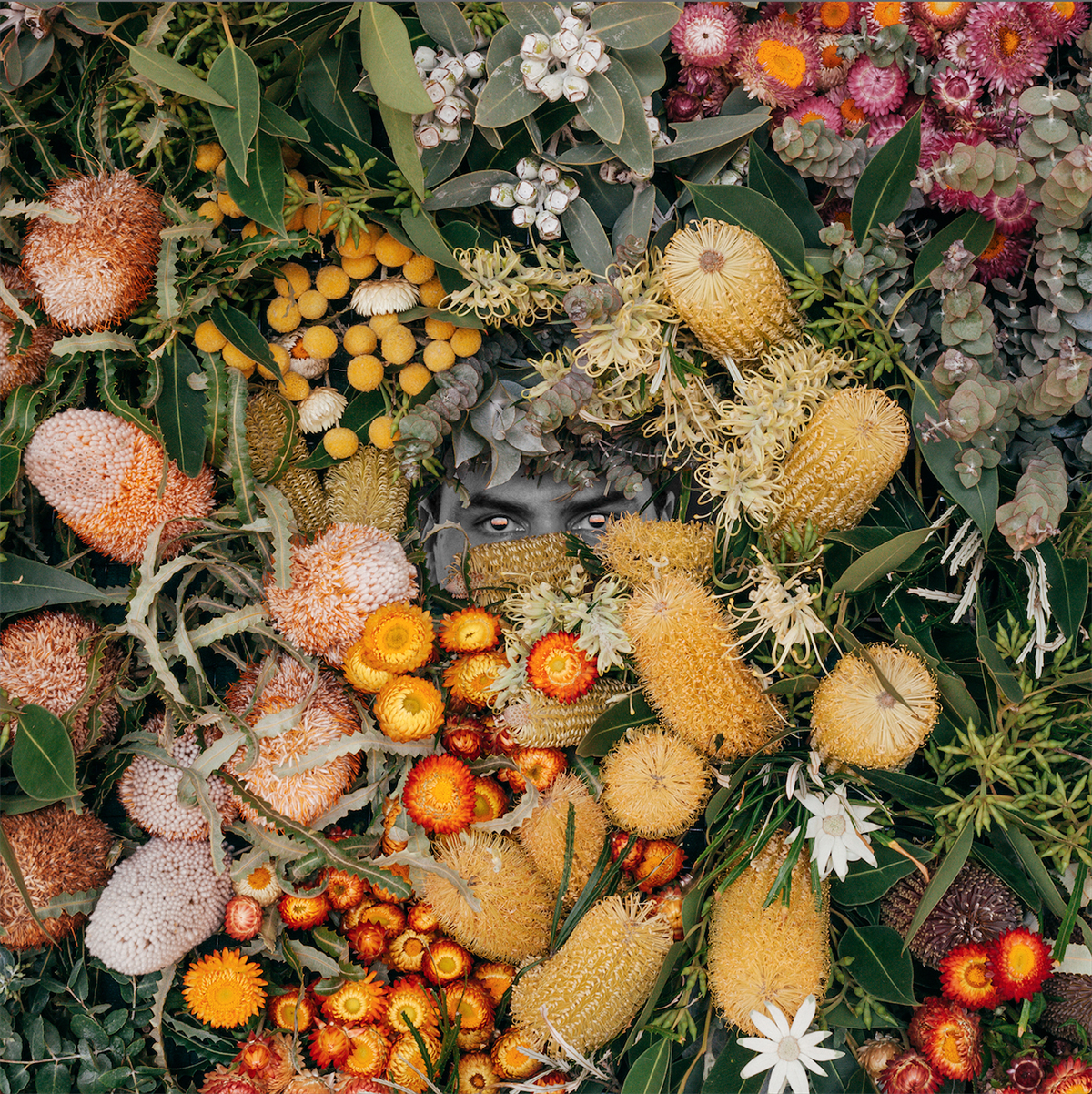
A superbly slippery medium: photography in RealTime 2005-2017
Photography has always been integral to RealTime, something instantly apparent in the considered and arresting series of cover images that signal the magazine’s commitment to boundary-pushing art. From RealTime’s inception in the mid-1990s, when photography was coming to dominate contemporary visual art, the editors closely followed developments, particularly in an Australian context, in this medium they saw being used in compelling, exploratory ways.
As I researched my recent overview of RealTime’s visual arts coverage during its first decade (1994-2004), I witnessed a medium in flux (particularly with the advent of digital technology) that lent itself to a multitude of approaches and discourses as it grew beyond the confines of conventional categorisation: documentary and ‘fine art’ photography, advertising imagery, snapshots. At the end of RealTime’s first decade, photography was clearly established as a contemporary artform, one uniquely placed, given its reputation for veracity, to be used by artists as a means of manipulating, subverting, interrogating or distorting ‘reality.’
Laying a solid, scholarly foundation for RealTime’s photography coverage post-2000 was novelist and assistant editor (c.2001-2004) Mireille Juchau, whose affinity with the medium is striking across a range of photography-related articles, including book reviews, interviews and responses to exhibitions both large-scale and intimate. In her review of two major photography exhibitions, at Sydney’s Museum of Contemporary Art and the Art Gallery of NSW, she takes on an eclectic array of artworks via a richly visual analysis synthesising the medium’s historical underpinnings and the manifold discourses and meanings to which it lends itself. “Photographs are not presented in either exhibit as a means for capturing ‘the real,’ but as a springboard for contemplating the internal life of dreams, the imagination and subjectivity within specific historical, cultural and political contexts.”
Her observations bring out photography’s enigmatic, paradoxical character, its propensity to render that which it captures, elusive. Looking at Polixeni Papapetrou’s series Phantomwise at Stills Gallery, Juchau finds herself scanning the works for a hint of the four-year-old child, Papapetrou’s daughter Olympia, behind the masked, archetypal guise she adopts in each image.
“Why do we search these deathly pictures for signs of life? Perhaps because as Papapetrou’s title suggests, the frozen charades in each photo seem less like child’s play than a phantasmagoria, less like performance than stasis: a series of lifeless caricatures.”
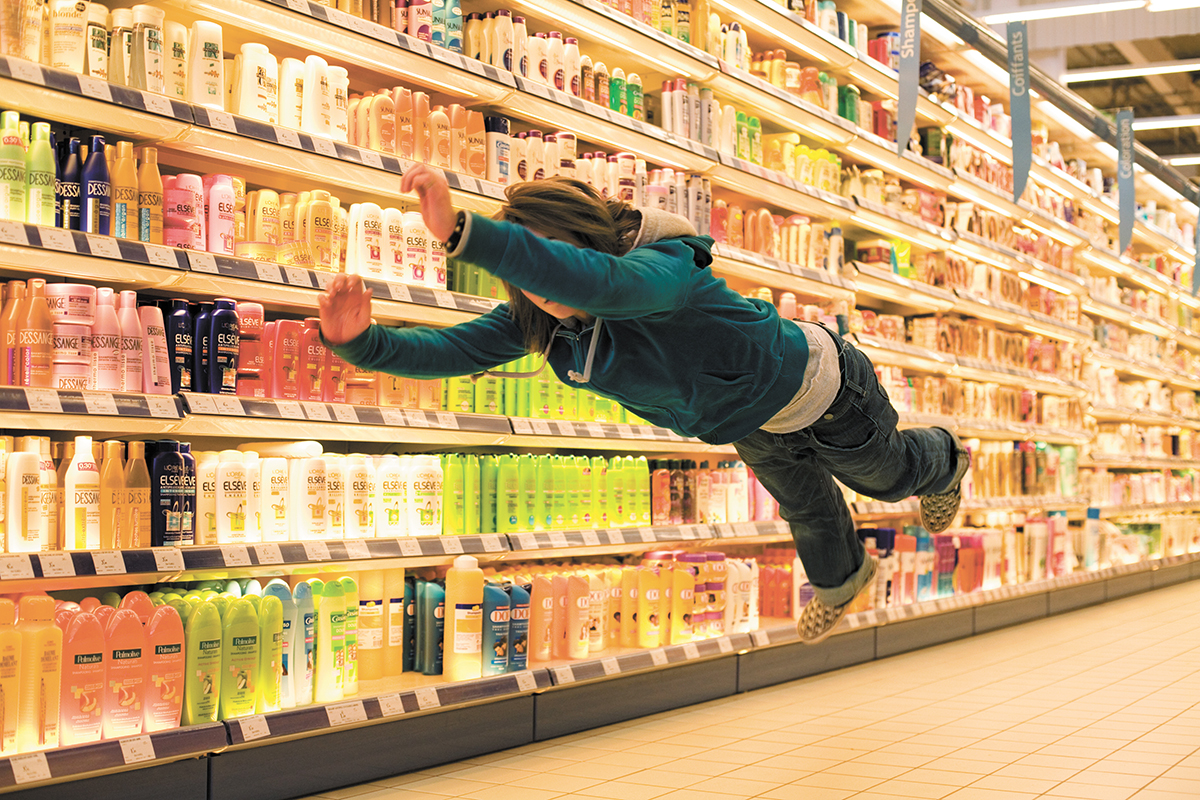
Hyper No. 04, Denis Darzacq, Perth Centre for Photography
Playing with documentary
Darren Jorgensen’s 2008 and 2010 reports on Fremantle’s eclectic biennial photography festival, Fotofreo, are superb contextual overviews, explaining photography’s documentary roots, and its current ubiquity, before presenting a selection of festival artists self-aware enough to rupture our assumptions of the medium.
Steering away from an illusionistic presentation of reality, Jorgensen finds artists in the 2008 festival who draw attention to substances and surfaces, like Perth-based Alex Bradley, “merging the televisual and biological” by swamping Hitchcock film images and TV visuals in close-ups of blood and sperm; or those who “play with our naturalistic expectations of the medium,” like France’s Denis Darzacq with his gravity-defying dancers suspended above supermarket aisles. Through photographing the passports and possessions of victims of the Rwandan massacres, London-based Adam Broomberg and Oliver Chanarin “in an exhibition that defamiliarises and makes radical the naturalising function of photography…show how the evidence of violence is not always violence itself.”
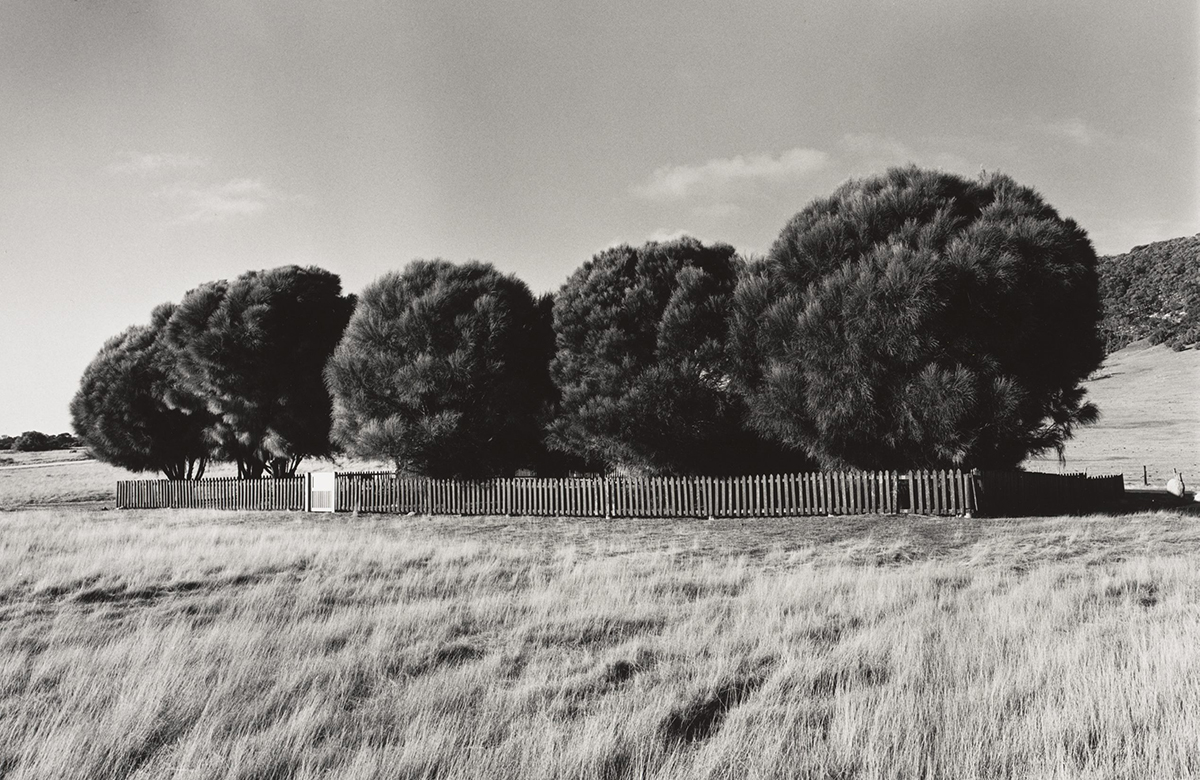
The Healing Garden, Wyabalenna,Flinders Island, Tasmania, from the series Portrait of a distant land (2005)
In 2010, Jorgensen writes of “category confusion,” observing slippage between conceptual and documentary forms in Tasmanian photographer Ricky Maynard’s diptychs featuring Tasmanian Aboriginal portraits and landscapes, unremarkable on the surface but unsettled by captions detailing historic atrocity. “The haunting of Tasmania appears to bleed through the image, as Maynard brings his documentary mode of photography to life with conceptual information.”
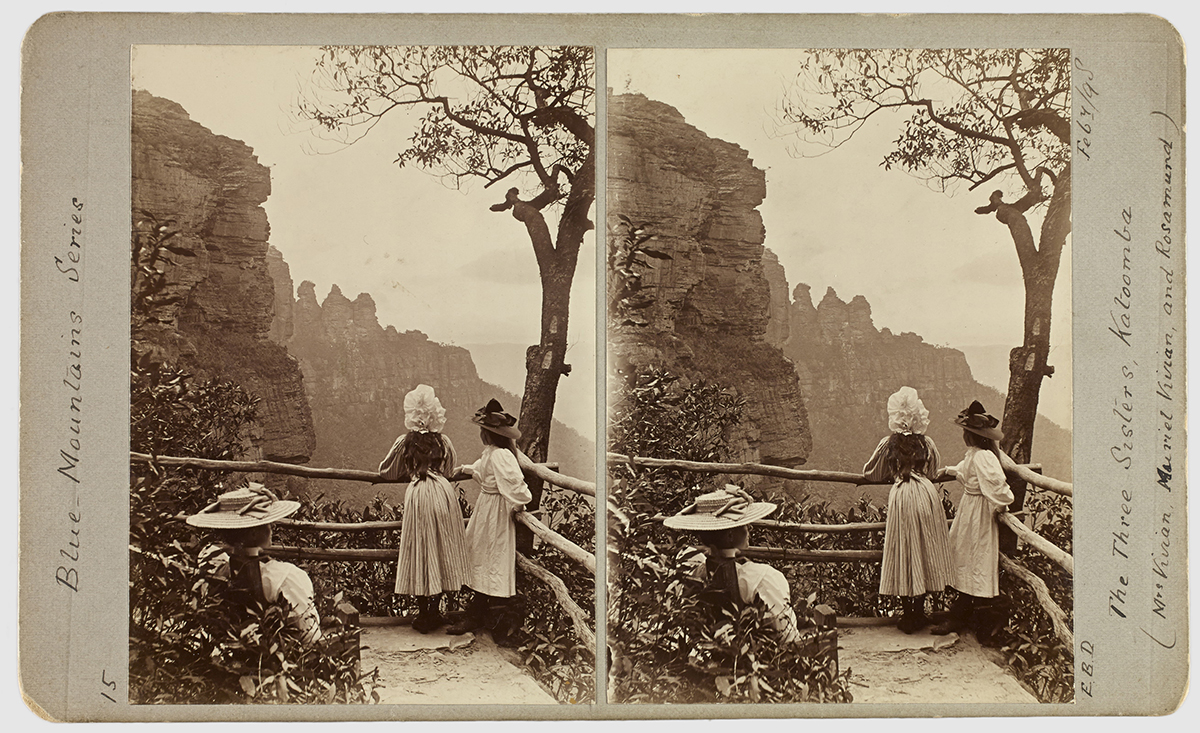
The Three Sisters, Katoomba, 1898, Ernest B Docker, stereograph, Macleay Museum, University of Sydney, The Photograph & Australia, Art Gallery of NSW, 2015
Histories
“Photographs have become a way of seeing ourselves. They’ve become a way of being ourselves. From the beginning, the photograph was taken up into real life, capturing imaginations.” Viewing a major historical exhibition at the Art Gallery of NSW in 2015, The Photograph and Australia, writer Robyn Ferrell is presented with a singularly neat example of symbiosis between photography and history, given colonial Australia and photography’s shared time frame. “The two have grown up together, so that now to display a history of photography in Australia is to display a history of Australia, and likewise a history of the photograph.”
Ferrell considers photography’s inherent characteristics and the way these influence our conception of reality. “It reproduces reality in a specific way — it renders it two-dimensional, it confines it to a frame, it edits out all senses but the visual. These critical elements shape our vision of what there is.” Taking this into account, can all photographic histories be considered in a sense alternative or parallel to the events they document; altered and influenced both by the formal qualities of the medium and the perspective of the one behind the lens?
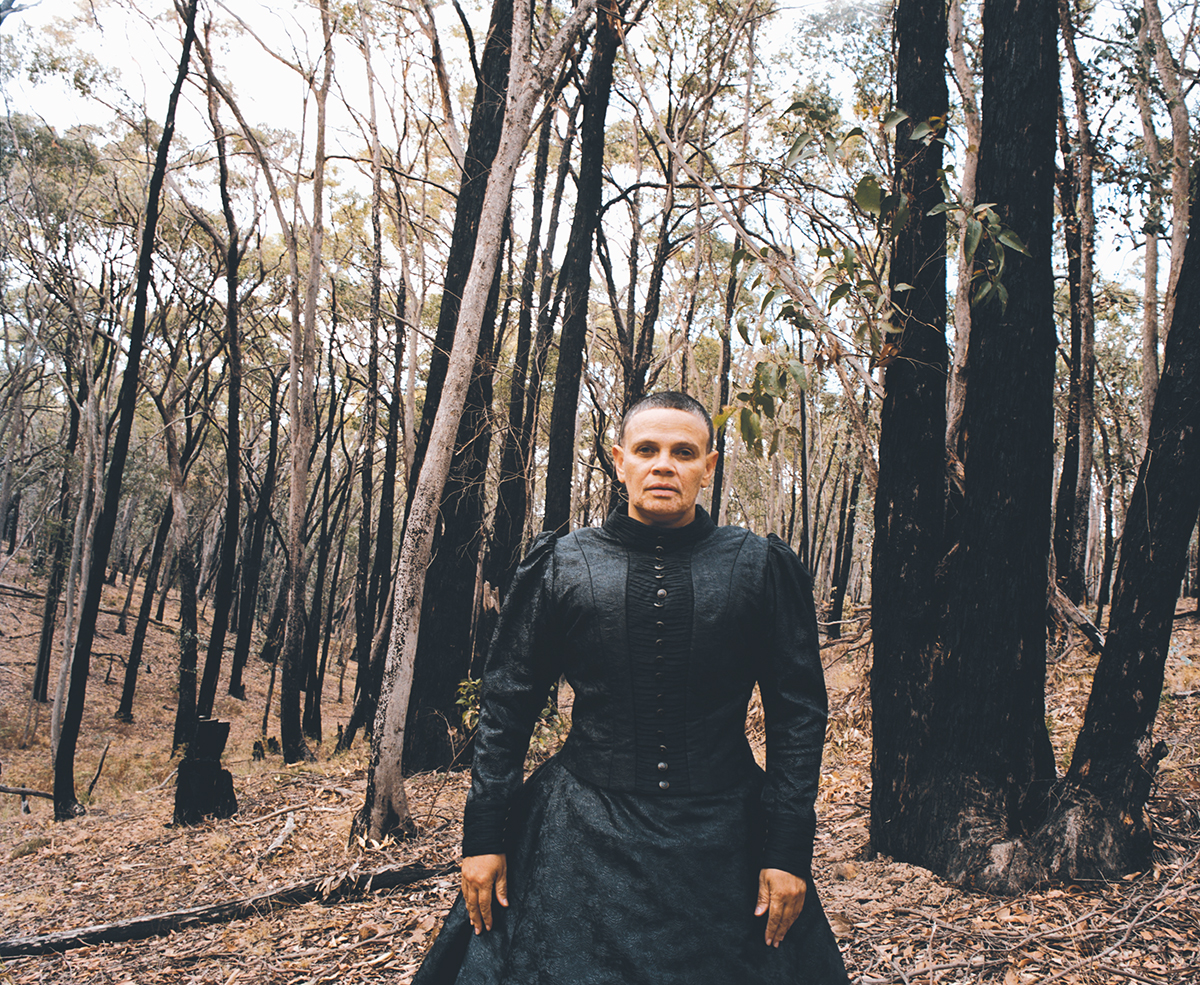
Poles Apart (2009), r e a, Breenspace
RealTime explored the work of various Australian conceptual artists who exploit photography’s association with the recording of history to present alternate histories that illuminate what has been omitted from the official record. In her photographic series Poles Apart at Breenspace (2009), Indigenous media artist r e a flees in 19th century garb through a charred bush landscape, her narrative scenes deliberately collapsing the pioneer paintings of the Heidelberg School – to whom “Indigenous people were invisible” – into the artist’s familial history of enforced separation and displacement. Virginia Baxter writes, “The artist takes colonial and art history, personal memory, painful lived experience and distils them into a powerful exhibition, which expresses the frustration and anxiety of living in a country that refuses to truly acknowledge its Indigenous history and heritage.”
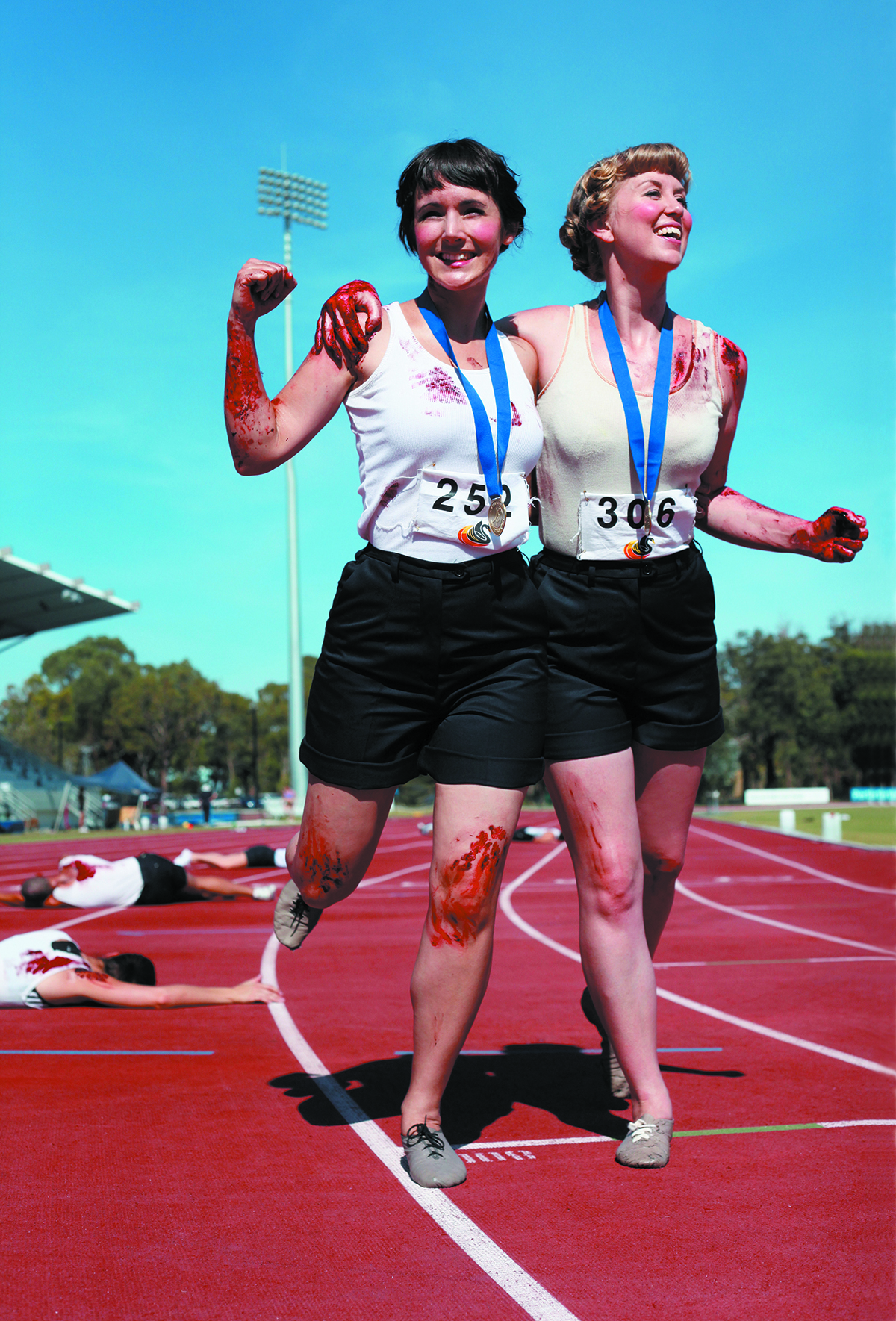
Pilar Mata Dupont, Tarryn Gill, Blood Sport (2010) detail, photo courtesy the artists and Goddard de Fiddes Gallery, Perth, photo Kim Tran
Multimedia art duo Tarryn Gill and Pilar Mata Dupont also take a performative role, in their signature camp set pieces parodying the artifice of nationalistic propaganda. A decade into the artists’ successful career trajectory, Laetitia Wilson vividly analyses their oeuvre through the lens of a large 2011 survey show at PICA entitled Stadium, where the artists pose as Riefenstahl-like athletes, surf lifesaver-pinups and the 1968 heads of state of their respective birth countries, among other personae. “The seductive glamour, burlesque, kitsch-Australiana and Hollywood styling is adopted with a wry stare derived from a deeper critique of issues anchored in nationalism, militarism and patriotism…Gill and Mata Dupont demonstrate just how easily a golden propaganda machine can mask sinister realities. They dance through the games of the art world distracting and seducing onlookers with their rich and glittery aesthetic.”
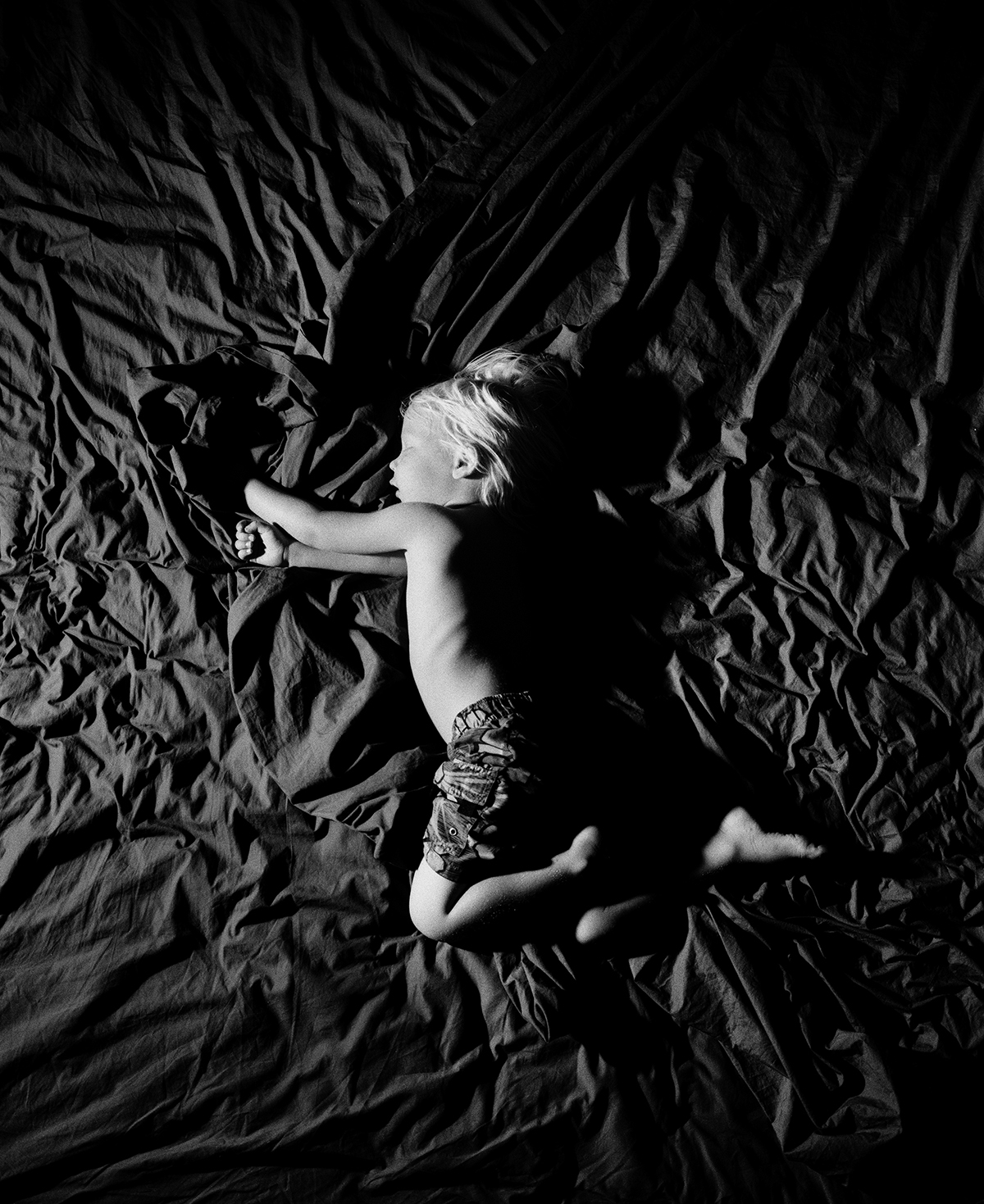
Fever Dash, Adelaide (2014), Trent Parke, Black Rose exhibition, image courtesy the artist and Art Gallery of SA
Waking dream
Photography’s believable façade can also be manipulated to conjure otherworldliness, as experienced by Virginia Baxter and Chris Reid in the epic, autobiographical installations of Australian photo-artist Trent Parke. Parke is a master of chiaroscuro, the interplay of light and dark at the heart of photography. His imagery explores photography as a kind of shadow form, both literal and figurative. “In the series of large, unframed photographs that follows, Parke works the film to its limits, employing his trademark wide-angle slabs of black intersected by myriad patterns of light to powerfully reveal a shadowland of violence and unease,” Baxter writes in her 2005 review of Parke’s road-trip exhibition Minutes to Midnight.
And of a later (2015) installation, Black Rose, Chris Reid writes, “The exhibition is set out as a personal retrospective whose elements are stitched into a narrative, a journey of memory, imagination and dreams like a story told in cryptic vignettes.” Parke, the only Australian member of the prestigious Magnum Photos collective whose founders included Robert Capa and Henri Cartier-Bresson, also calls attention to the technical processes of analogue photography; Baxter describes images from Minutes to Midnight in which Parke washes rolls of film in a grimy shower block. In Black Rose, Reid notes, “the last room of the exhibition contains hundreds of rolls of developed film, hung like a curtain against bright light for our inspection, representing not only the vastness of his oeuvre but Parke’s commitment to continuous observation.”
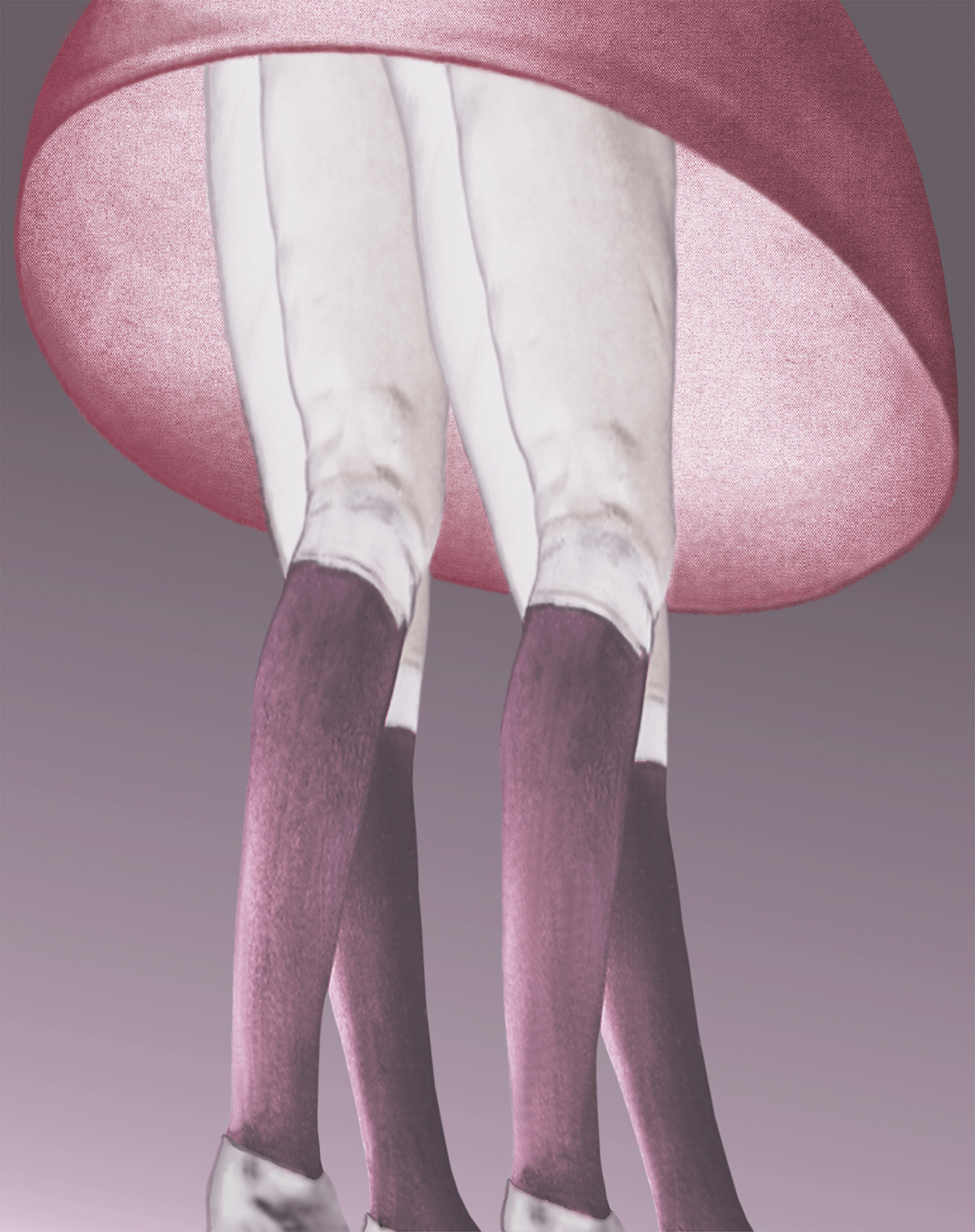
Twins, Pat Brassington, 2001, series Gentle, Fotofreo, image courtesy the artist and Stills Gallery, Sydney
The surreal manipulations of another prominent Australian contemporary photographer, Pat Brassington, also transport RealTime reviewers across the threshold of consciousness, to an uncanny world of warped domesticity and discombobulated femininity, “the haunting material of dreams,” as Darren Jorgensen puts it in his RT 97 Fotofreo overview. “Her renderings of torsos, tongues and limbs in pink, brown and orange exposures have the mark of a suburban imagination gone strange.” Responding to Brassington’s 2005 exhibition at Stills Gallery, Virginia Baxter is characteristically evocative: “Entering her latest exhibition, You’re so Vein, feels like falling into some powerful infantile fantasy. Here are partial views of the body, sensuous and disturbing maternal images from the subconscious rendered in soft focus, like dreams.”
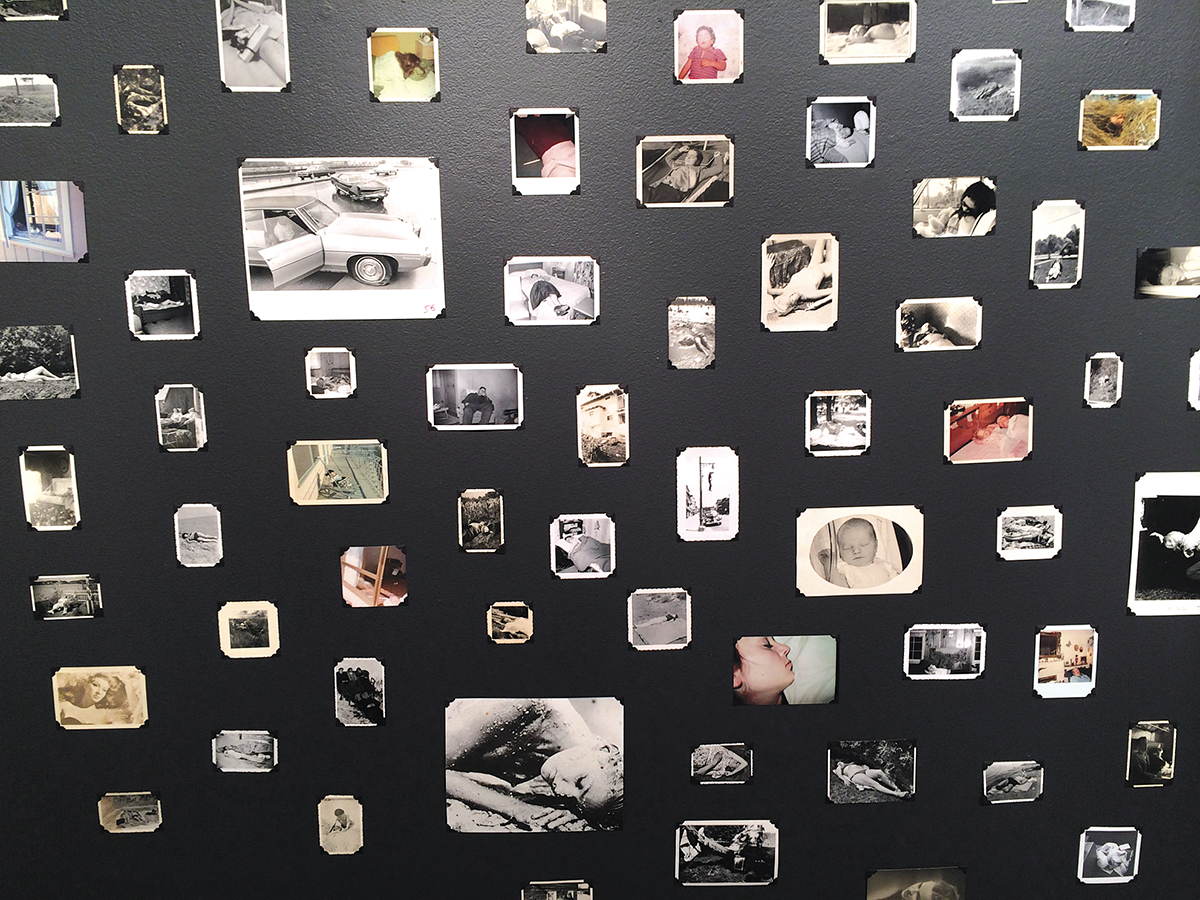
People who look dead but (probably) aren’t, Patrick Pound installation, image courtesy the artist and Stills Gallery Sydney, 2014
Vernacular
In more than one of RealTime’s photography reviews, the ubiquity of the medium is remarked upon as a complicating factor for photography-as-art. Across three Sydney exhibitions in 2014, Sandy Edwards examines a new trend towards the re-evaluation and embrace of ‘vernacular’ photography – “commonly interpreted as photography of everyday life, frequently produced by amateur photographers and often described as snapshots” — within visual arts discourse, to liberating effect.
“To collapse the snapshot aesthetic with the broad intentions of documentary photography performs a radical shift in perception benefiting both forms. It allows us to re-evaluate the rigid conventions of fine art photography, which needed to be in place to get photography seen as an artform in the first place.”
Increasingly used by postmodern artists like Patrick Pound, and Thomas Sauvin in his magnificent installation of more than half a million discarded photographic negatives, Beijing Silvermine, mounted at 4A Centre for Contemporary Art, the personal snapshot is naturally elegiac, possessing the death-in-life quality Roland Barthes identified in Camera Lucida. As Edwards expresses it: “Somehow this powerful metaphor for the brevity of life sums up the significance of photography in general and positions the vernacular photograph right at the heart of it.”
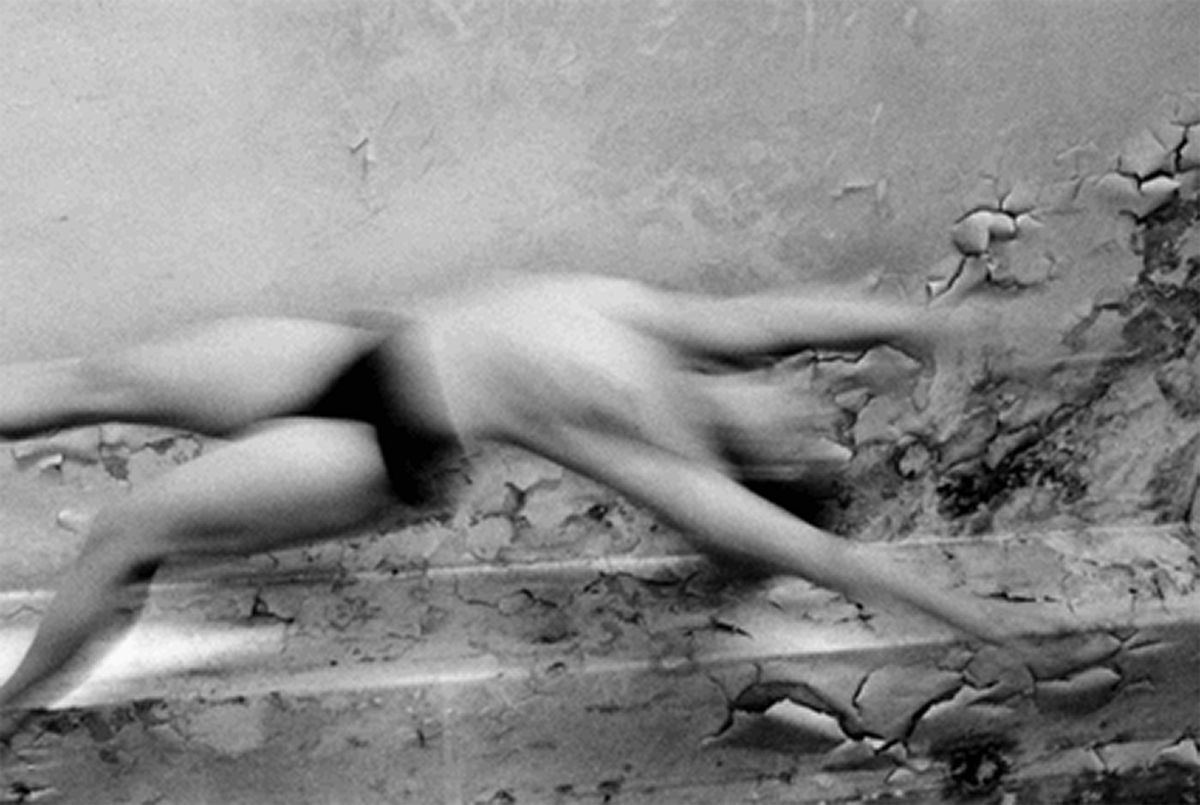
Kate Champion, About Face (2001), Heidrun Löhr, Parallax, The Performance Paradigm in Photography Australian Centre for Photography, 2012, image courtesy the artist
Collaboration and performativity
Capable of creating moments of exquisite stillness, as in the images of English photographer Craigie Horsefield, whose subjects are rendered quintessential, monumental, timeless (see Mireille Juchau’s review, Conversation in Slow Time, RT 79), photography conversely lends itself to dynamism, in truly collaborative projects that exist both as object and performance, stillness and motion. This characterises the practice of Heidrun Löhr, whose documentation of performances runs vitally through RealTime’s existence. In her review of Löhr’s 2012 solo exhibition, Parallax, at the Australian Centre for Photography, Sandy Edwards highlights Löhr’s talent for evoking movement through a still form, pushing the limitations of the medium in suggestive ways, experimenting with blur, mastering sequential photography.
As well as documenting staged performances, Löhr works in highly collaborative ways with performers who improvise for her camera. Most exciting for Edwards is an animated work involving 2,500 still images:
“In an improvisation staged solely for Löhr’s camera, performer Nikki Heywood enacted a work about her mother’s bouts of dizziness and falling in the now empty Edgecliffe apartment where she had lived. Captured in five days by Löhr’s camera and edited into a stunning animation, we see Heywood embodying her mother’s vulnerability. The pacing of the editing speeds up and slows down to emphasise the emotionality of the relationship.”
True collaborations too are Italian photographer Manuel Vason’s performative portraits of live artists, captured in five shots only, described in a vivid review by Tim Atack: “…these are performances for the camera, unique and brief—as brief as the snap of a shutter.”
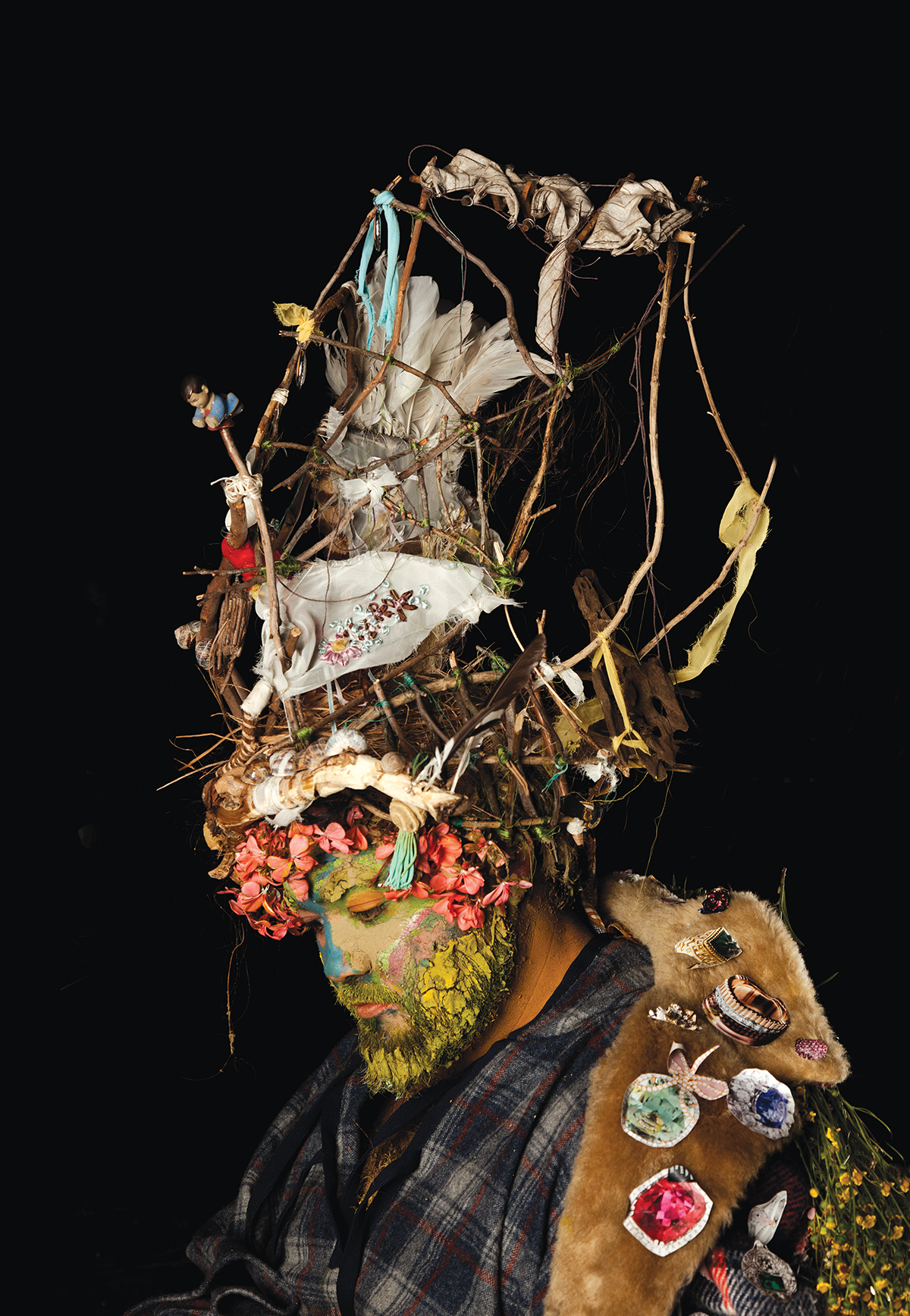
Shan, from the series Primal Crown, 2012, Shan Turner-Carroll, HATCHED National Graduate Show, 2013, PICA, image courtesy the artist
Identity and self-portraits
The cover of RealTime’s 2013 education issue (theme: Utopias and Horrors) displayed an image from that year’s HATCHED National Graduate Show: Shan Turner-Carroll’s Shan, from the series Primal Crown. Cast into relief against a black background like one of Arcimboldo’s cornucopian portraits, the artist’s elaborate headdress, face paint and introspective stance carry the weighty suggestion of a personal mythology. “In a new take on the portrait, Turner-Carroll displayed a series of ‘makeshift crowns for his family made from found objects that hold personal significance —relics embedded with present memories and future thoughts’ (catalogue).”
There’s a resonance here with the photographic self-portraits of Indigenous multimedia artist Christian Thompson, whose work appears regularly in RealTime. In a comprehensive review of Thompson’s 2017 survey exhibition Ritual Intimacy at Monash University Museum of Art, Andrew Fuhrmann responds to Australian Graffiti, a series of head-and-shoulders self-portraits in which the artist is garlanded in Australian flora, face partially obscured. “In the present context, however, the images seem also to participate in a rite of personal mythmaking. The floral ornaments start to look like sacred headdresses or the paraphernalia of a private cult; the fierce eyes staring out from the shadows, behind the bright flowers, are like those of a zealous new initiate.”
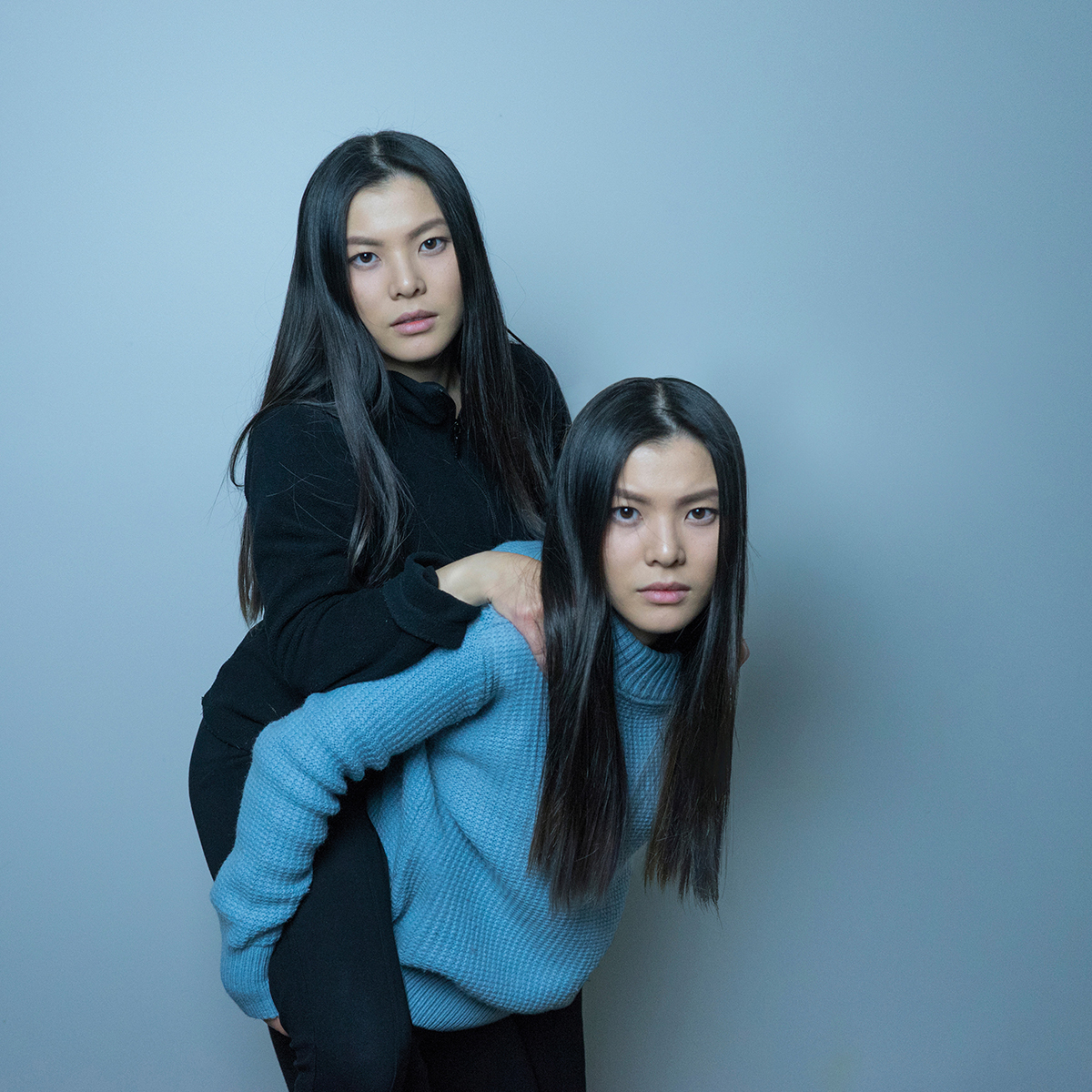
Para-Selves #4, Gwan-Tung Dorothy Lau, HATCHED National Graduate Show 2017, PICA, digitally manipulated photograph courtesy the artist
Citing Thompson as an influence, young multimedia artist Gwan Tung Dorothy Lau is interviewed in the 2017 education feature about her arresting series of digitally manipulated self-portraits, Para-Selves, in which the artist is kept in check by various doppelgangers. Born and raised in Hong Kong and possessing dual Australian citizenship, her work is a metaphor for the at times oppressive nature of negotiating cross-cultural identity. “I examine the way my actions oscillate between conforming to and excessively defying generalised portrayals of East-Asian culture. By figuratively depicting that observation, I attempt to evaluate and critique the influences of Western social expectations on cultural minorities.”
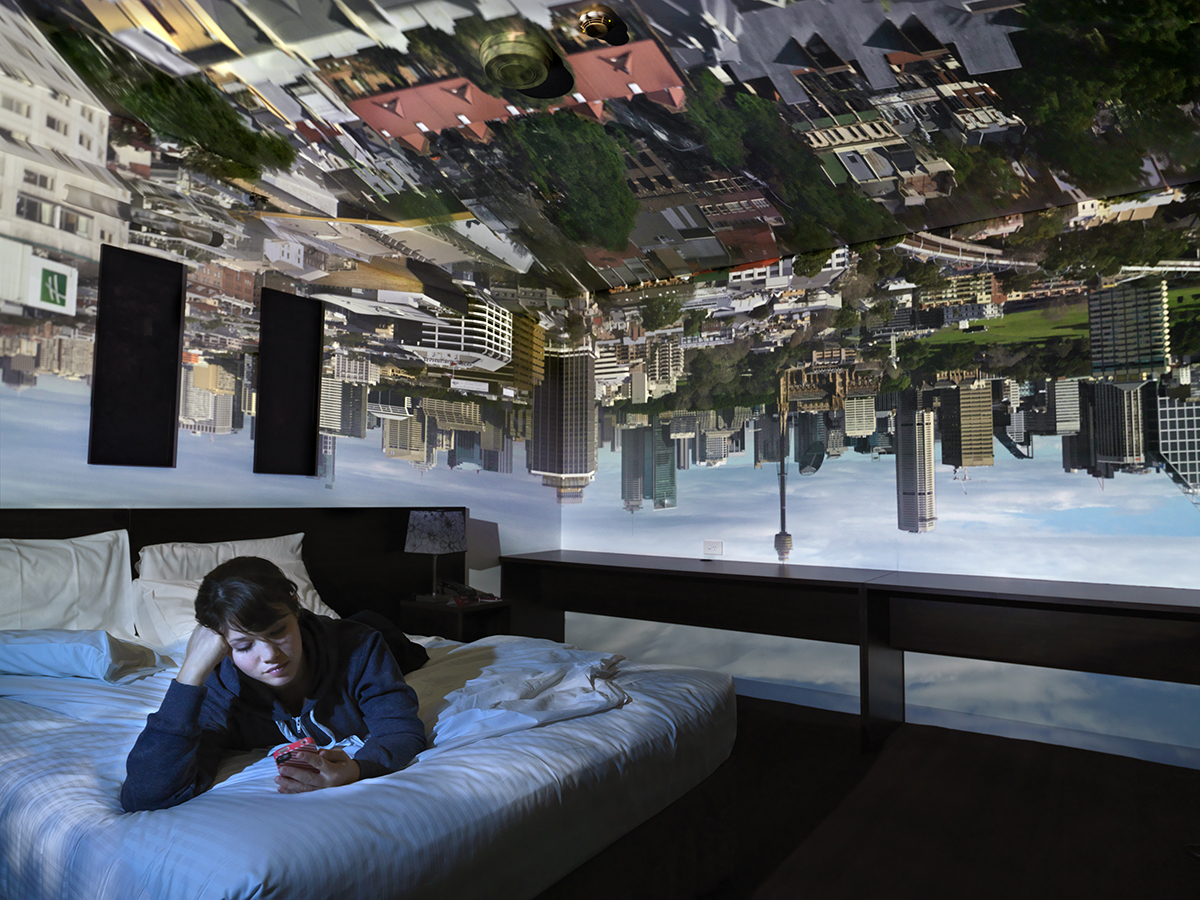
Room 1306, Mercure Potts Point, Jodi (2013); Robyn Stacey, Guest Relations
In-between spaces: photograph as environment
Some artists confound our expectations of photography, using it to create immersive installations that transform the medium from 2D ‘window’ onto an environment into an environment itself, simultaneously material and illusory. In a substantial 2012 interview, Keith Gallasch delves into the complex sculptural/photographic practice of German artist Thomas Demand, who reproduces “the everyday (houses, garages, bathrooms, kitchen implements, lawns, buildings, a pipe organ even) as life-size sculptures in paper and card, eerily stripped of surplus detail and commercial branding, getting down to some kind of worrying essence.” Demand achieves this through a process of turning 2D photographs into 3D sculpture, which he in turn photographs. He describes photography, the raw stuff of his work, as “a great commonplace…a global agreement on how to recognise the world in a representation.”
The interview is conducted in the lead-up to Demand’s installation The Dailies, at the idiosyncratic Commercial Travellers’ Association hotel in Martin Place, Sydney. Graeme Smith’s subsequent review in RT 109 unrolls in a series of elegant vignettes paralleling his experience of the exhibition. Smith is struck by the impression Demand creates, along with his collaborators, novelist Louis Begley and designer Miuccia Prada, of the sort of ‘non-places’ typified by hotel rooms, with their in-between quality; the sense of combined presence and absence that pervades not only hotel rooms but photographs themselves.
“Thomas Demand seemed to be provoking a type of reflection, and presumably insight, that only comes about through displacement. Demand gives, prescribing the vision, as he says, and Demand takes, handing you the moment and at the same time cutting it away. The subject in the photograph is a construction. It has an aura of reality but at the same time it doesn’t add up. It’s the slightly disturbing, preternatural silence of the spaces that exist either side of these disconnected moments that I find overwhelmingly seductive.”
Another disorienting photographic incursion into “that familiar otherworld of the hotel room” is witnessed by Keith Gallasch and Virginia Baxter in Guest Relations (Stills Gallery, 2013), a series of photographs by Robyn Stacey where “inverted cityscapes hover spectacularly over human figures at rest,” with a marvelous sci-fi strangeness wrought by the ancient pinhole camera technique. This review shares with other RealTime responses to photography a powerful immediacy, a sense that the writers are engaging with something beyond mere representation. It stems perhaps from photography’s basis, however attenuated, in reality; the fact that light must hit something material in order for a photograph to exist. It’s also a testament to the magazine’s encouragement of reviewing that, while thoughtful and analytic, derives from personal experience.
RealTime’s general focus on interdisciplinary artforms also serves its critiques of photography well, given the fascinating slipperiness of the medium (Jorgensen’s “category confusion”) as well as the prominent performative element in much contemporary photography. Broader overviews from writers highly literate in the form (Sandy Edwards, Darren Jorgensen, Robyn Ferrell) provide valuable context, while profiles of individual artists show how the medium continued to be extended and manipulated, producing startling perspectives on history, identity, materiality.
–
Read about photography in RealTime from 1994-2004 in Katerina Sakkas’ “Visual Arts, RealTime 1994-2004: Part 2, Convergence & Resurgence.”
Top image credit: Christian Thompson, Purified by Fire from the Lake Dolly series, 2017, image courtesy the artist






